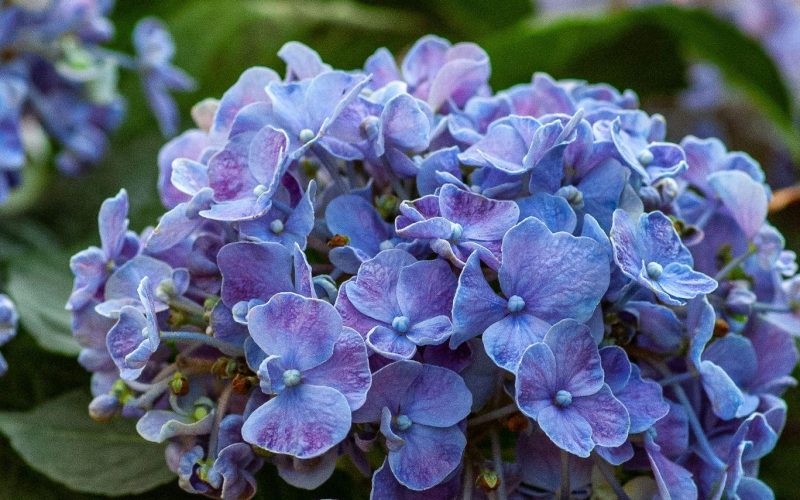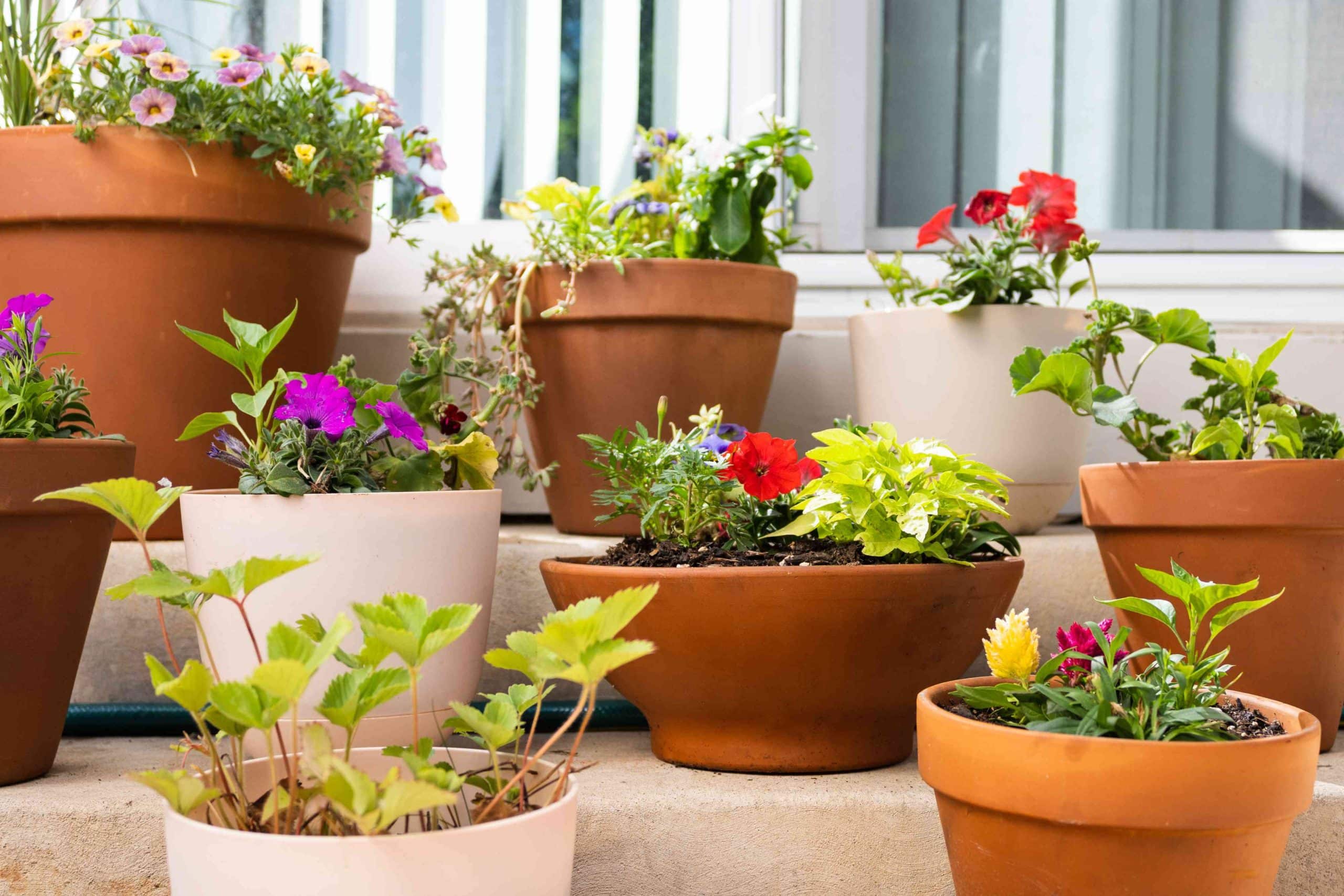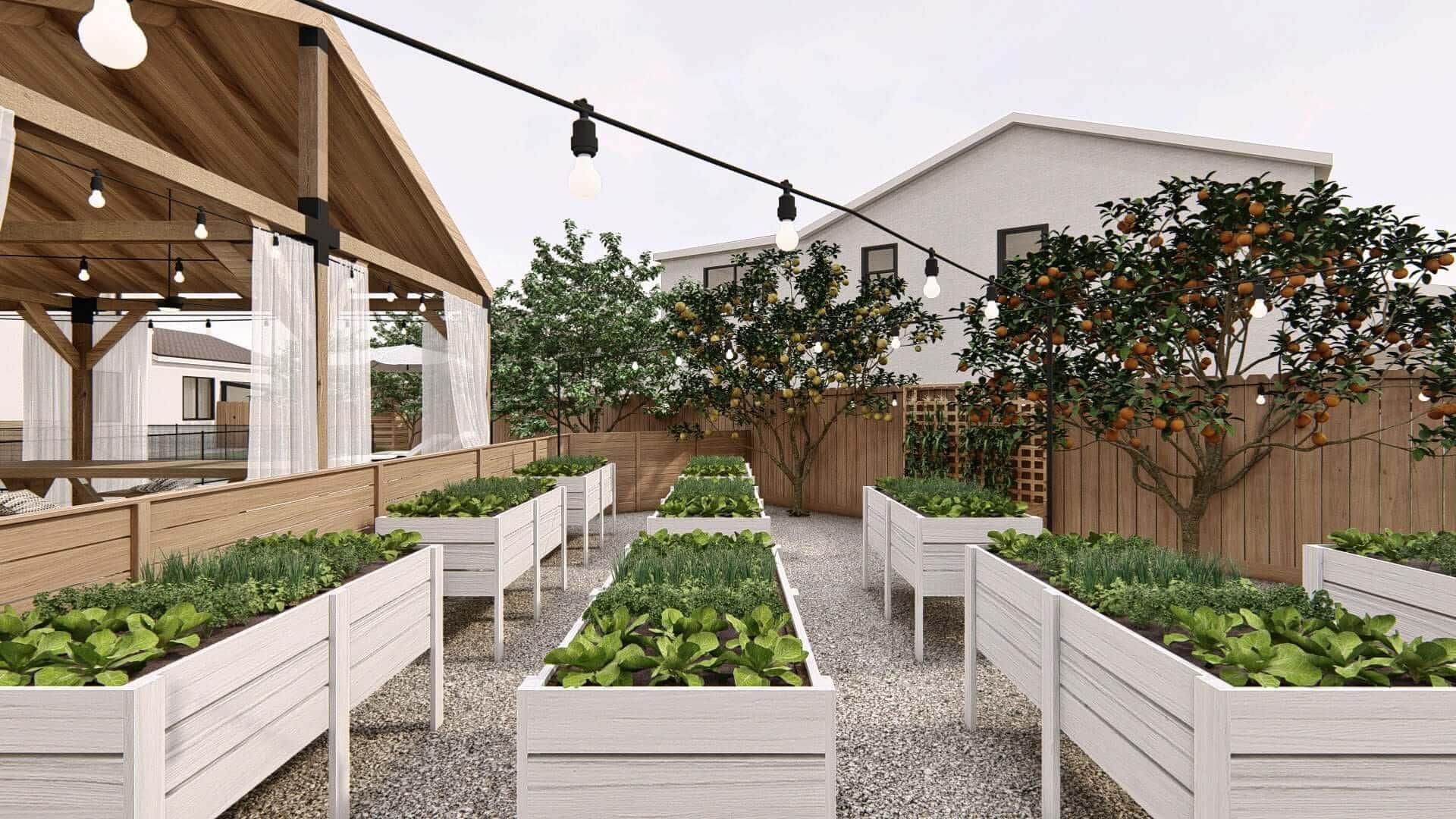As summer draws to a close and the cooler months settle in, UK gardeners often feel that their gardens begin to lose their vibrant colour. But autumn doesn’t have to mean a dull, lifeless garden.
In fact, with careful planning and the right choice of plants, your garden can remain full of vibrant hues well into autumn, with the added bonus of laying the groundwork for a stunning spring display. By planting a combination of autumn-flowering plants and hardy bulbs that thrive in the UK climate, you can extend the beauty of your garden for months to come.
Here’s a guide on how to keep your garden looking colourful throughout the autumn months and how to set yourself up for success when spring returns.
Embrace Autumn-Flowering Plants for Immediate Colour
Autumn doesn’t need to mean the end of bright, beautiful blooms. Many hardy plants are well-suited to the UK’s unpredictable autumn weather, offering colour and texture even when temperatures dip. These flowers thrive in the cool, wet conditions typical of the British autumn, making them ideal for maintaining a vibrant garden when most summer blooms have faded.
Inject colour into your autumn landscape with stunningautumn planting flowersthat thrive in the UK’s cooler temperatures. Here are some excellent options for your garden:
- Foxglove Dalmatian (Digitalis purpurea): Foxglove Dalmatian is a beautiful, versatile plant that adds height and elegance to your autumn garden. Its tall spires, adorned with bell-shaped flowers in shades of pink, purple, and white, create a striking display. Foxgloves bloom from summer into autumn, and their long-lasting flowers are perfect for adding colour late in the season. Plus, they are hardy enough to withstand the UK’s cooler autumn temperatures. They prefer partially shaded areas and can add a woodland feel to your garden.
- Primula ‘Stella Sunshine’: A striking variety of primrose, the Primula ‘Stella Sunshine’ is an autumn star. Its rich green leaves form a rosette at the base, while its bright yellow flowers add a pop of vibrant colour to any border or container. Primulas are ideal for UK gardens because they thrive in damp, shady conditions and can handle the onset of colder weather. They also bloom in autumn and early spring, ensuring a colourful garden even during cooler months.
- Bellis perennis (English Daisy): This charming flower is a must-have for any autumn garden. Bellis, also known as English daisies, offer delightful button-like blooms in shades of white, pink, and red. Unlike summer daisies, Bellis English Daisy thrives in cooler temperatures, and their compact size makes them perfect for borders or containers. Their ability to bloom in late autumn, and even through the winter, ensures your garden stays colourful long after other flowers have faded.
- Pansies (Viola tricolor): Pansies are one of the most popular autumn flowers in the UK due to their vibrant colours and ability to withstand cold weather. Available in a wide array of colours—including purples, blues, yellows, and oranges—pansies bloom profusely in the autumn and can even continue flowering through the winter. They’re perfect for adding bursts of colour to containers, hanging baskets, or garden beds. Pansies thrive in cool temperatures and tolerate light frost, making them a go-to choice for autumn planting.
By incorporating these resilient, late-blooming plants into your garden, you can maintain a vibrant display well into autumn. These flowers not only add bursts of colour but also cope well with the UK’s variable weather, making them ideal for gardeners seeking a low-maintenance but colourful autumn garden.
Plant Autumn Bulbs for a Colourful Spring Display
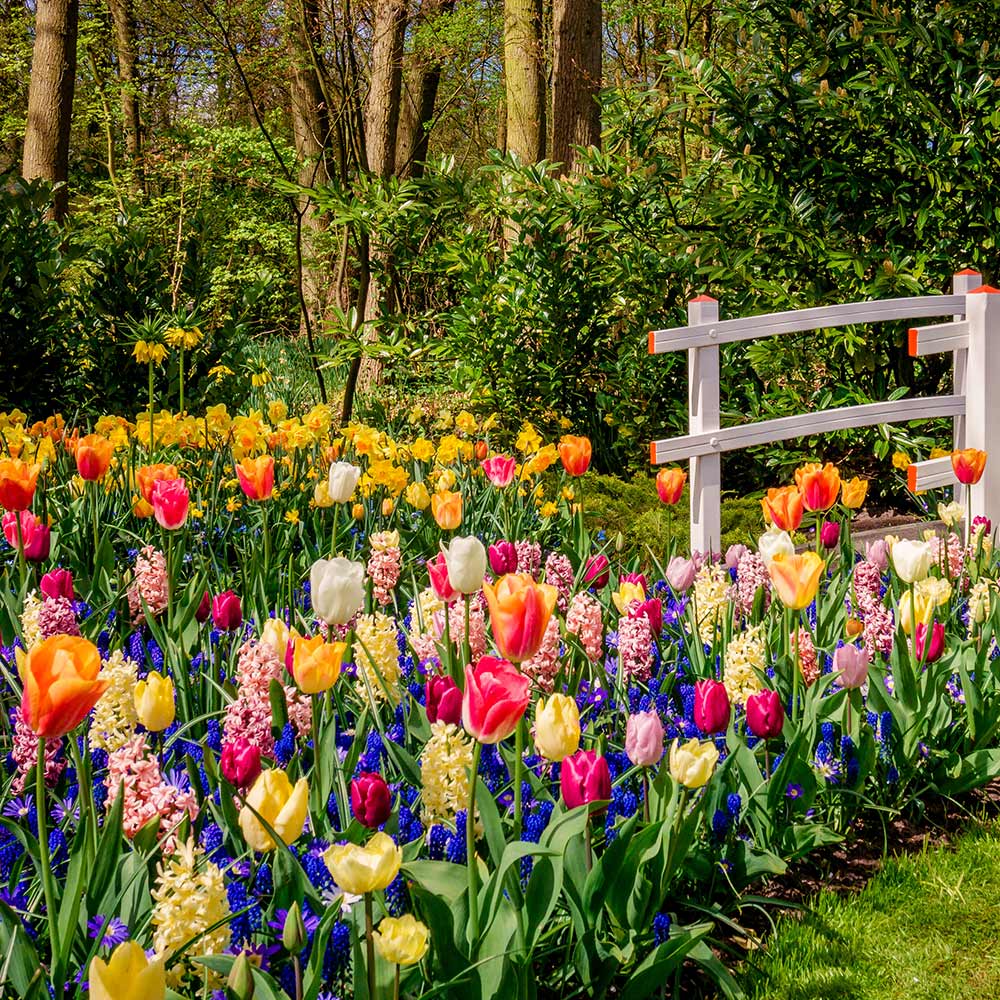
While autumn is the season of preparation for many gardeners, it’s also the perfect time to plant bulbs that will reward your efforts with stunning spring blooms. The cool, moist autumn months provide the perfect conditions for bulbs to establish strong root systems before they go dormant during the winter. This gives them the head start they need to burst into life as soon as the first signs of spring appear.
For a pop of spring colour, plantautumn planting bulbsnow, as they establish well in the cooler months. Some top choices for autumn planting include:
- Daffodils (Narcissus): Perhaps the most iconic spring flower in the UK, daffodils are easy to grow and offer a cheerful burst of colour after winter. While yellow is the classic daffodil shade, there are also varieties in cream, orange, and even peach, allowing you to play with a broader colour palette. Plant them in autumn for an early spring display, as they are often among the first flowers to bloom in March.
- Tulips: Tulips are a gardener’s dream when it comes to colour. They come in almost every hue imaginable, from vibrant reds and yellows to soft pastels and deep purples. By planting tulip bulbs in the autumn, you’ll ensure a spectacular show of colour in late spring. Tulips do best in well-drained soil, so be sure to choose a sunny spot where they won’t get too waterlogged during the winter months.
- Crocuses: These hardy little flowers often push through the last patches of snow to announce the arrival of spring. Crocuses come in shades of purple, white, and yellow and are ideal for naturalising in lawns, borders, and rock gardens. Plant them in large drifts for maximum impact in early spring.
- Alliums: Alliums, with their tall, architectural stems and large globe-shaped flower heads, make a striking addition to any garden. Their blooms, which can range from deep purple to white, appear in late spring to early summer, adding height and drama to your garden displays. Alliums also have the added benefit of being deer- and rabbit-resistant, making them a great choice for rural gardens.
By planting bulbs in autumn, you can set the stage for a colourful garden in spring. The UK’s mild autumns provide the perfect environment for these bulbs to root, ensuring that when the weather warms up, your garden will burst into life with vibrant blooms.
Incorporate Foliage Plants for Year-Round Interest
Flowers aren’t the only way to keep your garden colourful. Foliage plants, which offer interesting textures and colours throughout the year, can add depth and contrast to your garden, especially in the autumn. Many foliage plants come into their own during this season, with leaves that change colour as the temperatures drop, providing a natural autumnal display.
Some fantastic foliage plants for UK gardens include:
- Heucheras (Coral Bells): Heucheras are known for their colourful leaves, which come in shades ranging from deep purple and red to lime green and orange. They are perfect for adding a splash of colour to borders and containers, and their evergreen nature means they provide interest throughout the year. Heucheras thrive in the UK’s temperate climate, making them an excellent choice for autumn planting.
- Ornamental Grasses: Grasses such as Miscanthus and Stipa create movement and texture in the garden. Their golden or bronze seed heads provide a beautiful contrast to flowering plants, while their graceful form adds a sense of lightness and flow. Many ornamental grasses reach their peak in autumn, turning lovely shades of gold, brown, or even red as the season progresses.
- Evergreens: Evergreens like boxwood, yew, or holly can add structure and greenery to your garden all year round. In autumn, their deep green hues provide the perfect backdrop for the bright colours of autumn flowers and bulbs. Holly is especially popular for its red berries, which add a festive feel as winter approaches.
Layer Your Planting for Continuous Colour
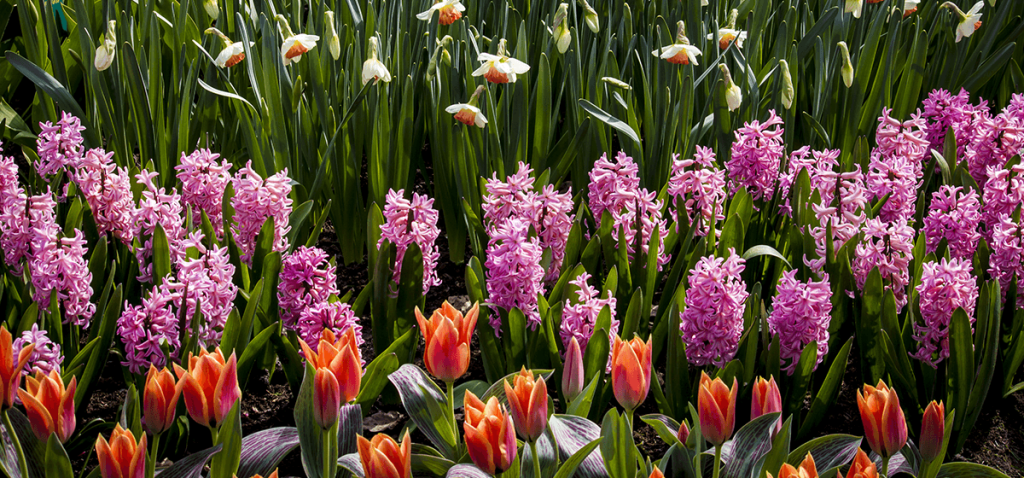
One of the best ways to ensure your garden remains colourful throughout the year is to adopt a layered planting approach. This technique involves combining plants that bloom at different times or that offer year-round interest, ensuring that your garden always has something to offer, no matter the season.
For example, you can plant autumn planting bulbs beneath perennials like Rudbeckia or Sedum, which will provide vibrant colour through autumn. As the perennials die back in winter, the bulbs will remain hidden beneath the soil, ready to burst forth when spring arrives. This layered approach allows you to maximise the use of space in your garden and ensures continuous interest as the seasons change.
Use Containers to Extend Your Autumn Colour
If you have limited space or simply want to add a pop of colour to your patio or balcony, containers are a great option for autumn planting. Pots and containers allow you to easily swap out plants as the seasons change, giving you flexibility in how you display your plants.
In autumn, you can fill containers with autumn planting flowers like pansies, violas, or chrysanthemums, which are all hardy enough to withstand the cooler weather. Add bulbs to your containers for a layered effect that will continue to provide colour into spring. This method works particularly well in small gardens or urban settings where ground space is limited.
Happy Gardening!
Autumn doesn’t have to mean the end of colour in your UK garden. With the right selection of flowers, bulbs, and foliage, you can create a garden that remains vibrant and interesting throughout the season.
Inject colour into your autumn landscape with stunning autumn planting flowers that thrive in the UK’s cooler temperatures, and plant autumn planting bulbs now to ensure a spectacular spring display. By planning ahead and layering your planting, you can enjoy a garden full of life, beauty, and colour year-round.





